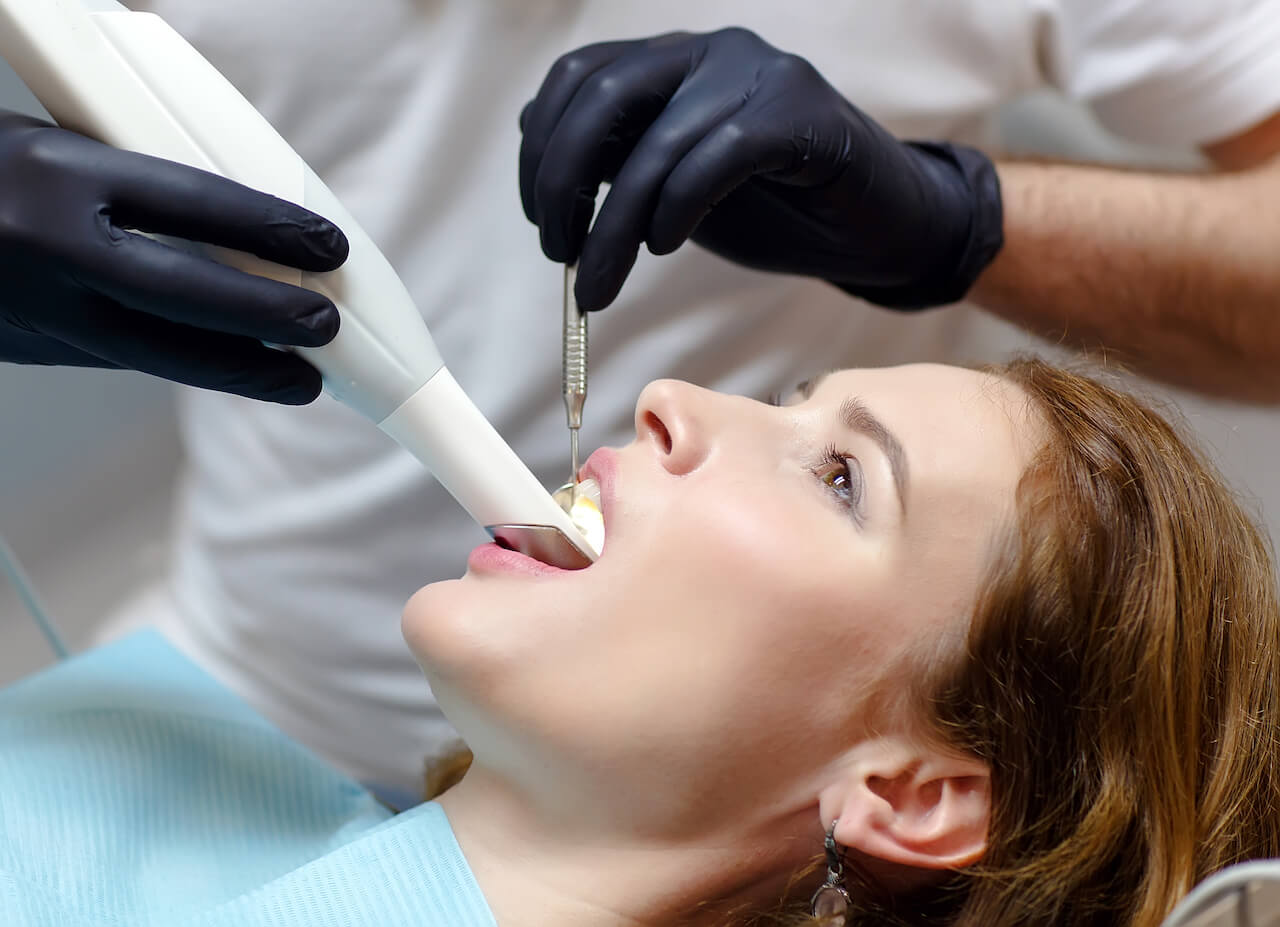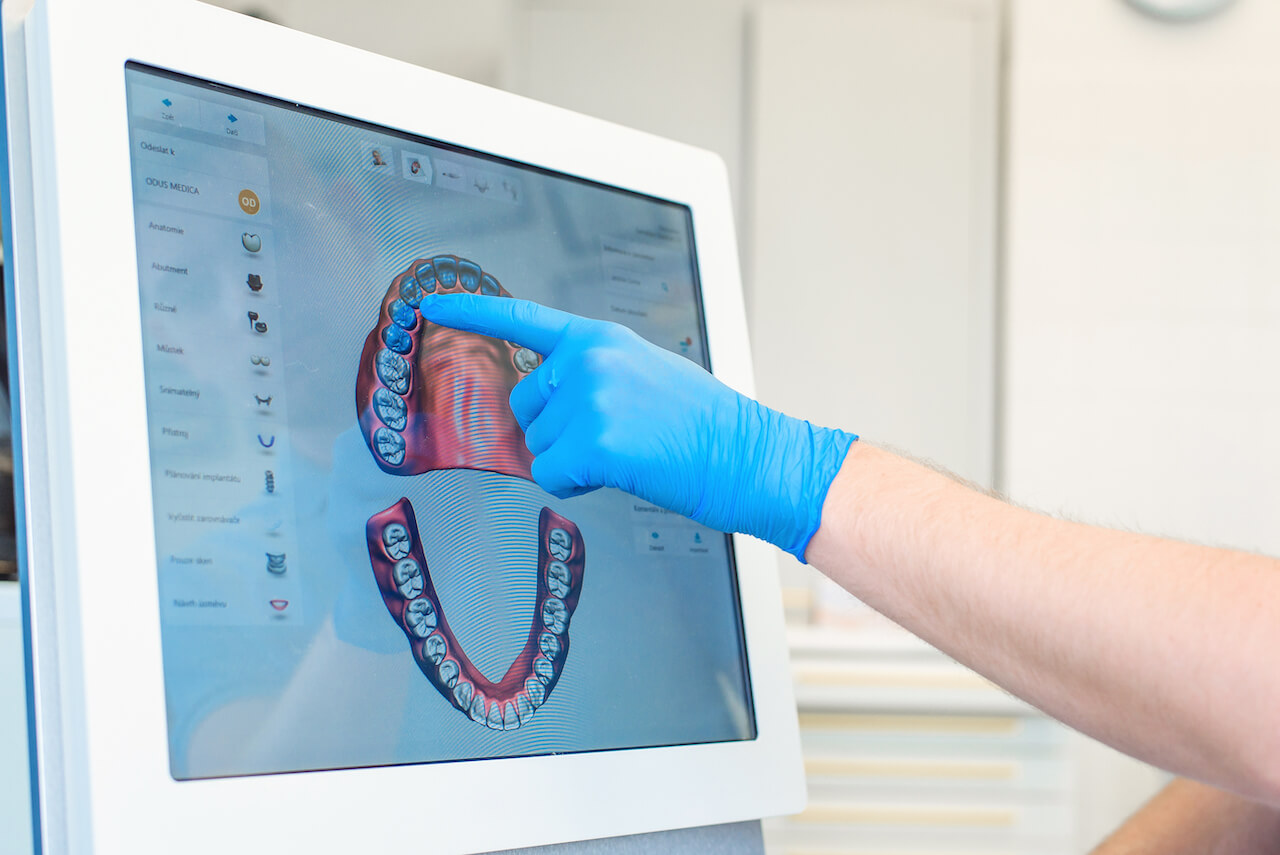Dental Scanners: How They Work

We love showing off our latest tools, and you can feel comfortable asking about any new technology you see in our dental office.
Dental scanners are just one of the latest advances in the field of dentistry that make it easier and safer to treat our patients.
Since we anticipate using these scanners more, it’s worth taking a moment to make sure that everyone understands how they work.
Knowing the uses and benefits of intraoral scanners also makes it possible for you to understand why we may use them during your treatments.
How Does An Intra-Oral Scanner Work?
An intra-oral scanner consists of a handheld wand, special software and a computer. The scanning wand is designed to comfortably fit in your mouth.
Using the wand, your dentist will slowly move over the arches of your teeth to scan the tooth structure and soft tissues.
During the scan, the wand picks up information regarding the size and shape of your teeth that it sends to the computerized system.
Within minutes, the dentist has a digital impression of your mouth that they can use for a variety of purposes.
What Does a Dental Digital Scanner Do?
One of the most important things that a digital scanner does is replace the need for molded impressions.
With traditional impressions, it may take more than one try to get a good mold for clear aligners or dental crowns.
Digital scanning technology increases accuracy for dental care. Your dentist can also use the image that a scanner generates to show you important information about your oral health.
For instance, Dr. Nielsen could show you how a misalignment in your bite is impacting your teeth. Or, he may show you where he plans to replace missing teeth with a dental bridge or implants.

Do Intraoral Scanners Use Radiation?
Radiation comes from several different sources.
X-rays use ionizing radiation, which can have negative health consequences during high or frequent exposures.
Radio and light waves are also considered forms of radiation. But they contain very little energy compared to what traditional x-rays produce.
Intraoral scanners use visible light technology that is similar to what occurs when you take photos with your smartphone. This means that you’ll receive no more risk to your health during your dentist’s use of a dental digital scanner than you would during a normal photo shoot.
Are Dental Scanners Safe?
The lack of radiation is just one of the many ways that this technology makes dental treatments safer.
With the use of a scanner, you’ll also be able to avoid being exposed to potential chemicals in traditional impression putties.
Although the impression materials dentists use are considered safe, dental scanning eliminates the need for them completely.
Scanning technology can also reduce the need for multiple impressions or x-rays.
Dentists can easily share the results with other care providers or third-party orthodontic appliance or tooth restoration manufacturers.
Conclusion
Digital dental scanners are revolutionizing how dentists provide care to their patients. Using the detailed images that scanners provide increases accuracy for treatments.
Patients also report greater comfort during exams compared to traditional x-rays and impressions.
With such positive outcomes, we look forward to including scanning technology as part of our routine treatment practices.